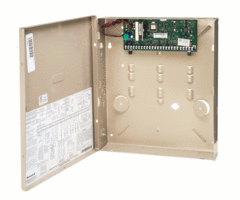What is the Difference Between the Honeywell VISTA 20P & the VISTA 20SE?
There are many differences between the Honeywell VISTA 20P and the VISTA 20SE. Most of these differences involve the shortcomings of the VISTA 20SE, which is an older system with very limited functionality. If you are still using a VISTA 20SE, we recommend replacing it with a VISTA 21iP.

The biggest shortcoming of the Honeywell VISTA 20SE is its inability to access Total Connect. In order to use Total Connect, a Honeywell panel must be able to send and receive signals through an AlarmNet communicator. However, the VISTA 20SE can only function as a one-way communicator, in which it can send outbound signals, but it cannot receive incoming commands from an AlarmNet device. Without Total Connect, there is no way to interact with the system remotely, and every action must be done from a keypad or using a keyfob. Meanwhile, a VISTA 20P can use Total Connect, but an IP or cellular communication module will need to be added, along with the appropriate PROM chip upgrade if needed.
Another limitation of the VISTA 20SE is the fact that it cannot control any Z-Wave devices. Z-Wave devices are home automation appliances that can function as part of a smart home setup. They can be controlled remotely or set to activate automatically using rules and scenes that are programmed using either the security panel or Total Connect. While Z-Wave functionality is impossible with the VISTA 20SE, a VISTA 20P can control Z-Wave devices using either a Tuxedo Touch or a Honeywell VAM.
Both the VISTA 20P and the VISTA 20SE feature three partitions, with partition 3 being a common partition. However, the VISTA 20SE is not addressable, and any given device must be hardwired onto a specific part of the panel's circuit board in order to function with a desired partition. This includes any keypads that are used with the system. There is no global arming on a 20SE, and if multiple partitions are being used, both Partitions 1 and 2 must be armed separately. On the other hand, the VISTA 20P is an addressable panel, and partitioning is achieved through programming, with only one keypad bus being needed for the panel. Global arming is also possible on a VISTA 20P, allowing you to arm every partition on a VISTA 20P at the same time.
One other important difference between the VISTA 20SE and the VISTA 20P is the number of supported zones. A VISTA 20SE can only support up to 38 zones, and only one hardwired zone expander, such as the Honeywell 4219, can be used with the system. This hardwired zone expander must also be set to address one on a VISTA 20SE. Meanwhile, the VISTA 20P can support up to 48 zones, and five hardwired zone expanders can be used. The address that will be used for a 4219 is determined by the zones being programmed. In order to use wireless zones with either the VISTA 20SE or the VISTA 20P, a wireless receiver will need to be added. We recommend using the 6160RF Keypad for this purpose, as it will double as both an excellent alphanumeric keypad and a wireless receiver.
Did you find this answer useful?
We offer alarm monitoring as low as $10 / month
Click Here to Learn More- Answered
